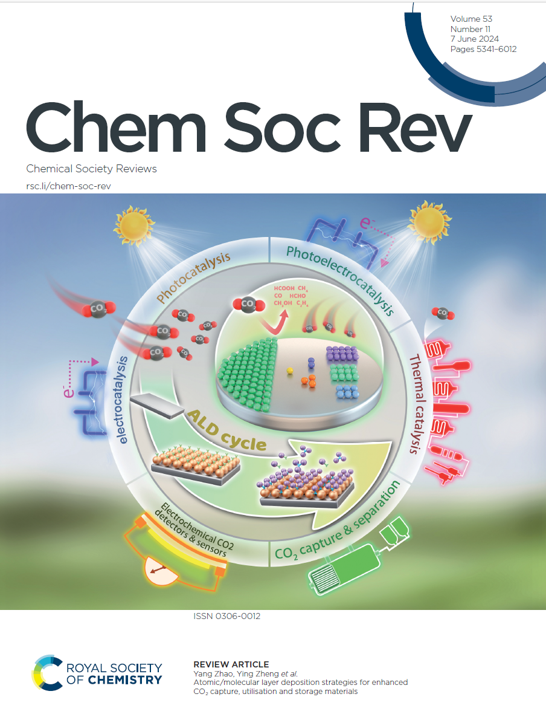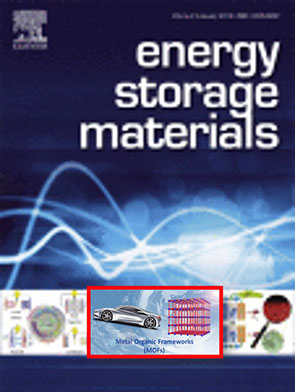Highlight
Contact
E-mail:yzhao628@uwo.ca
Highlight
Cover Pages
 |
Front cover: Atomic/molecular layer deposition strategies for enhanced CO2 capture, utilisation and storage materials (Chem. Soc. Rev., 2024, 53, 5428-5488)
Atomic layer deposition (ALD) and molecular layer deposition (MLD) methods utilize various strategies, including ultrathin modification, overcoating, interlayer coating, area-selective deposition, template-assisted deposition, and sacrificial-layer-assisted deposition, to synthesize numerous novel metal-based materials with diverse structures. These materials, functioning as active materials, passive materials or modifiers, have contributed to the enhancement of catalytic activity, selectivity, and stability, effectively addressing the challenges linked to CO2 transformation. Herein, this review focuses on ALD and MLD's role in fabricating materials for electro-, photo-, photoelectro-, and thermal catalytic CO2 reduction, CO2 capture and separation, and electrochemical CO2 sensing. Significant emphasis is dedicated to the ALD and MLD designed materials, their crucial role in enhancing performance, and exploring the relationship between their structures and catalytic activities for CO2 transformation. Finally, this comprehensive review presents the summary, challenges and prospects for ALD and MLD-designed materials for CO2 transformation.
|
 |
Front cover: Metal-Organic Framework for Energy Storage and Conversion (Energy Storage Materials, 2/2016)
Metal-organic frameworks (MOFs), a novel type of porous crystalline materials, have attracted increasing attention in clean energy applications due to their high surface area, permanent porosity, and controllable structures. MOFs are excellent precursors for the design and fabrication of nanostructured porous carbons and metal oxides, especially for hierarchical nanostructures. In this review, the recent development and understanding of MOFs and MOF-derived nanomaterials in the applications of fuel cells, batteries (e.g. lithium-ion, lithium–sulfur, and lithium-air batteries), and supercapacitors are summarized in detail. We also present future trends, prospects, and possible obstacles to the development of advanced MOFs and MOF-derived nanomaterials for more promising and large-scale commercial applications of clean energy.
|
Videos
|
Highlight Video: Molecular Layer Deposition for Energy Conversion and Storage (ACS Energy Letters., 2018, 3, 899–914) In this review, we focus on the recent developments and understand of MLD in the application of batteries, supercapacitors, water splitting, photodegradation, solar cell, and membranes. The different types of MLD films and nanomaterials derived from MLD are discussed based on the specific application and properties. Finally, the future direction of MLD in energy-related applications has further prospected. |
Award
 |
Reader's Favorite Paper on Joule: Addressing Interfacial Issues in Liquid-based and Solid-State Batteries by Atomic and Molecular Layer Deposition (Joule, 2018, 2, 2583-2604 ) In this review, we summarize the recent developments of ALD/MLD techniques in the application of Li batteries, with a special focus on the transition from liquid to solid cells. Different sections, including the fabrication of interfacial materials by ALD/MLD, interfacial engineering on SSEs and electrodes, and thin-film/3D SSBs designed by ALD/MLD, are discussed in detail. Moreover, the future directions and perspectives of ALD/MLD in interfacial engineering for SSBs are disclosed. |

